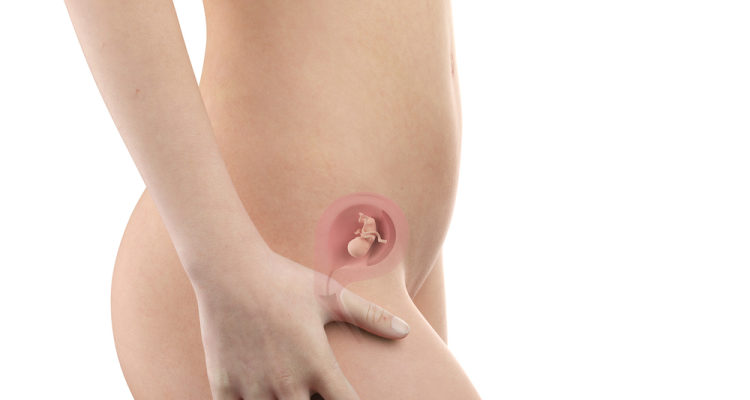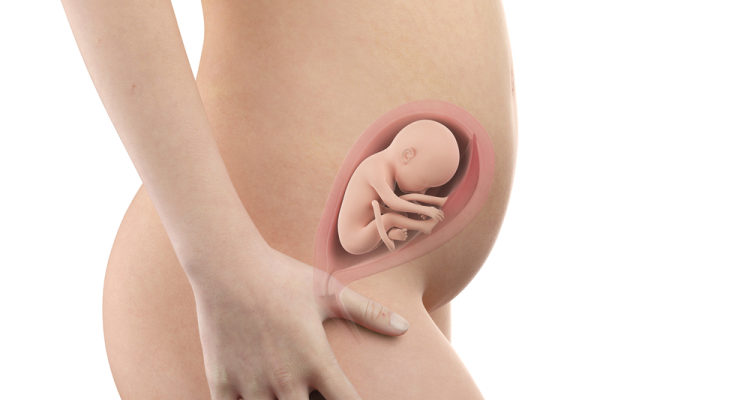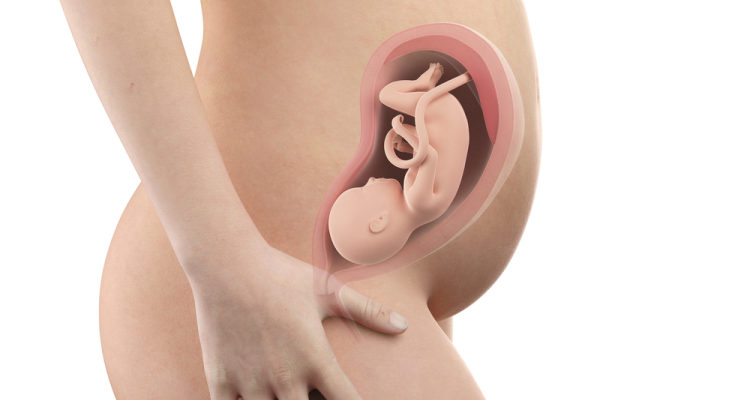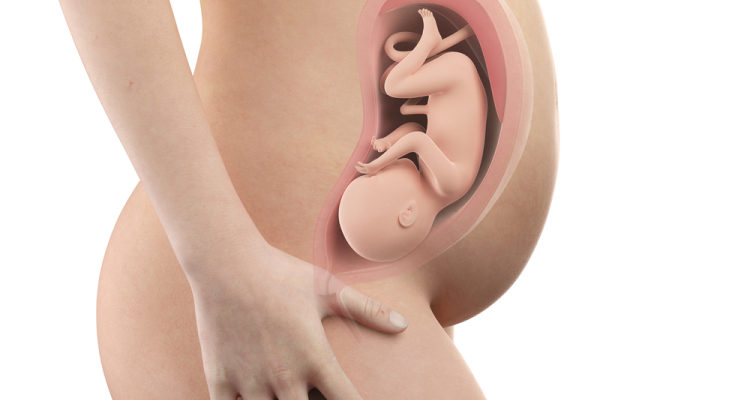Week 9
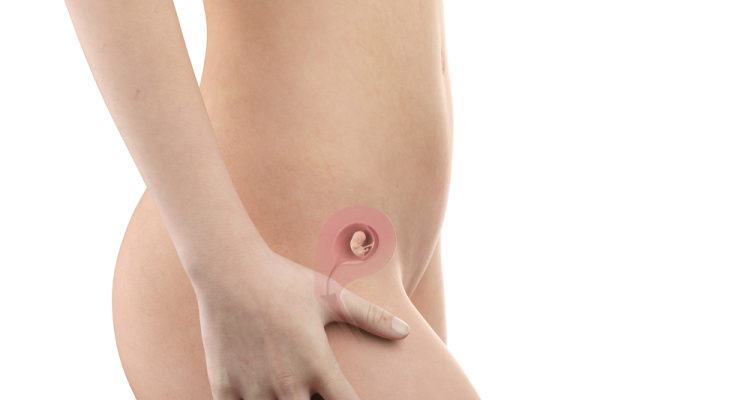
Many pregnant mothers wonder how their 9-week-old fetus has developed. So let's explore with aFamilyToday Health now!
Measuring the nape of the nape is an important test during pregnancy to help determine if your baby is at risk for Down's disease. Therefore, many pregnant mothers wonder how much dullness of the nape of the neck is normal.
Pregnancy is the time when you will be exposed to a lot of new concepts and terms related to the health of your fetus and mother. The nape of the nape is one of the important concepts you need to know.
This ultrasound method helps you detect the risks of birth defects that your baby may have so that there is a timely intervention. The following article will provide you with more useful information related to measuring the nape of the nape of the neck that pregnant mothers should not ignore.
Narrowing opacity is a buildup of fluid in the skin on the back of the fetal neck. Testing a blood sample of the mother, ultrasound assessment of "absence" of the nasal bone fetus and results of ultrasound nuchal translucency will be a factor to consider fetuses at risk for Down syndrome or are not.
Measuring the nape of the nape is one of the most important tests to do in the first trimester of pregnancy when you are 11-14 weeks pregnant. The reason, if the pregnant mother does this test too soon before the fetus is 11 weeks old, the nape of the neck will be very blurred because the fetus is very small, making the measurement inaccurate. However, if the pregnant mother takes the measurement when the pregnancy is over 14 weeks old, the results return to the normal index, making it difficult for the doctor to diagnose.
After the scan, you will get the results right away. Therefore, you should have some knowledge to understand the meaning of the numbers listed on the result sheet. If the baby is between 45 - 84mm in size, the nape of the neck will normally be less than 3.5mm.
The fetus with nape of the nape of the nape of the neck less than 1.3mm, the risk of Down syndrome is quite low. If the index is 6 mm, the risk of Down syndrome and other defects is quite high.
11 weeks fetus, the standard nape of the nape of the neck is 2mm.
13 weeks fetus, standard index is 2.8mm.
Studies have shown that the high nape of the nape of the neck is due to a significant increase in fluid build up in the neck area. The cause of this increase is certain conditions in the fetus. Therefore, the nape blurring ultrasound is the most effective method for doctors to check and diagnose fetal defects in the first 3 months of pregnancy .
The higher the index, the higher the risk of developing an abnormal chromosomal abnormality (Down's disease) and associated with structural abnormalities, such as an abnormal or abnormal heart. cardiac form.

The timing of this test is very important, your doctor will recommend that you take a nape blur measurement between 11-14 weeks of pregnancy for the best results. A number of other tests are also done during this period.
An ultrasound scan of the nape of the nape is like any other ultrasound test. After applying a layer of gel to your abdomen, your doctor will use a hand-held device to apply it to the skin of your abdomen. During an ultrasound, you can feel the pressure of the pressure probe against the abdominal wall but it doesn't cause any damage.
Usually, the ultrasound will be done through the abdomen, but for women with a tilted uterus or slightly overweight, an ultrasound with the transvaginal probe will give more accurate results.
First, the doctor will measure from the top of the head to the end of the spine of the fetus, then take a measurement of the nape of the nape. The white part on the ultrasound screen represents the baby's skin and the black part is the fluid accumulated in the nape of the neck.
The basis for calculating the risk of fetal malformations related to chromosomal abnormalities was determined by measuring the opacity of the nape of the nape in combination with the mother's age, gestational age and blood test results.
Gestational age is the most important factor, as the risk of a fetus having a chromosomal abnormality increases with the age of the pregnant woman. For example, the risk of a fetus having Down syndrome ranges from 1 / 1,200 in pregnant women aged 25 but it increases to 1/100 in pregnant women aged 40 .
Due to the thickening of the nape of the fetus each day, the researchers were able to locate the blurred nape area via ultrasound for 3 weeks. The doctor will combine the results of the opacity measurement with the age of the fetus, the age of the mother to see if the baby is at risk for certain abnormalities at birth.
In general, the thicker the nape of the nape of the fetus, the higher the chance that the fetus will have a chromosomal problem. You can get a diagnosis immediately or wait up to 10 days if the doctor has to send the data to a processing center.
Conversion table for the nape of the nape of the neck is the standard basis to determine if your baby is normal or not. If the results are not as expected, it is not certain that the baby will have Down syndrome.
Tests can help determine if your baby has Down syndrome but this does not mean that your baby definitely has Down syndrome if an ultrasound of the nape of the nape of the neck is in the danger zone. Or if the results are correct, it is not sure that the baby is not born with Down.
This test is more likely to not detect symptoms of the disease. If you don't really believe the results of the test , you can ask your doctor for an amniocentesis for more accuracy. In addition, some defects such as spine fractures, crooked feet and cleft palate were detected only during ultrasound at 20 weeks.
Remember that a normal screening result (a negative result) does not guarantee that the fetus has a normal chromosome, but it does indicate a low incidence. Besides, an abnormal (positive) screening result does not mean that the fetus is definitely having a problem with the chromosome, but it is only high-risk. In fact, most babies with a positive result actually don't have a problem. Only one third of fetuses have high measurement results, are born with chromosomal defects.
In addition, if the baby's nape blur reading is higher than normal, the baby is also at high risk of congenital heart disease. Therefore, during pregnancy, you will have a special ultrasound called an echocardiogram . If the fetus has heart disease, the baby needs to be monitored with routine ultrasound and at birth will need to be in a medical center with enough facilities for resuscitation.
Many pregnant mothers wonder how their 9-week-old fetus has developed. So let's explore with aFamilyToday Health now!
11 weeks fetus, baby's face continues to develop, mainly in the ear area, the head is about half the length of the body.
The development of the fetus changes with each stage. aFamilyToday Health shares with you everything you need to know about your 24-week-old fetus.
29 weeks pregnant will be the time when the mother is 7 months pregnant. During this time, the baby has reached a certain level of development in size, weight ...
The 33-week-old fetus was able to hear, feel and even see some. Baby can also dream at this stage!
Pregnant mothers often worry during labor. 3 exercises aFamilyToday Health will help pregnant mothers prepare for psychology and good health when pregnant women are in labor.
Learning about the effects of abortion on aFamilyToday Health tells you the link between abortion and its potential risks and when it is safe to get pregnant again.
How do mothers elect vitamin D supplements? Please share from an expert at aFamilyToday Health to know food sources and when to supplement this vitamin.
Join aFamilyToday Health to learn about eggs and sperm, how they meet, and about conception and the formation of the fetus.
aFamilyToday Health - A post about the breast changes of pregnant women and how to help you overcome the discomfort of these changes.
